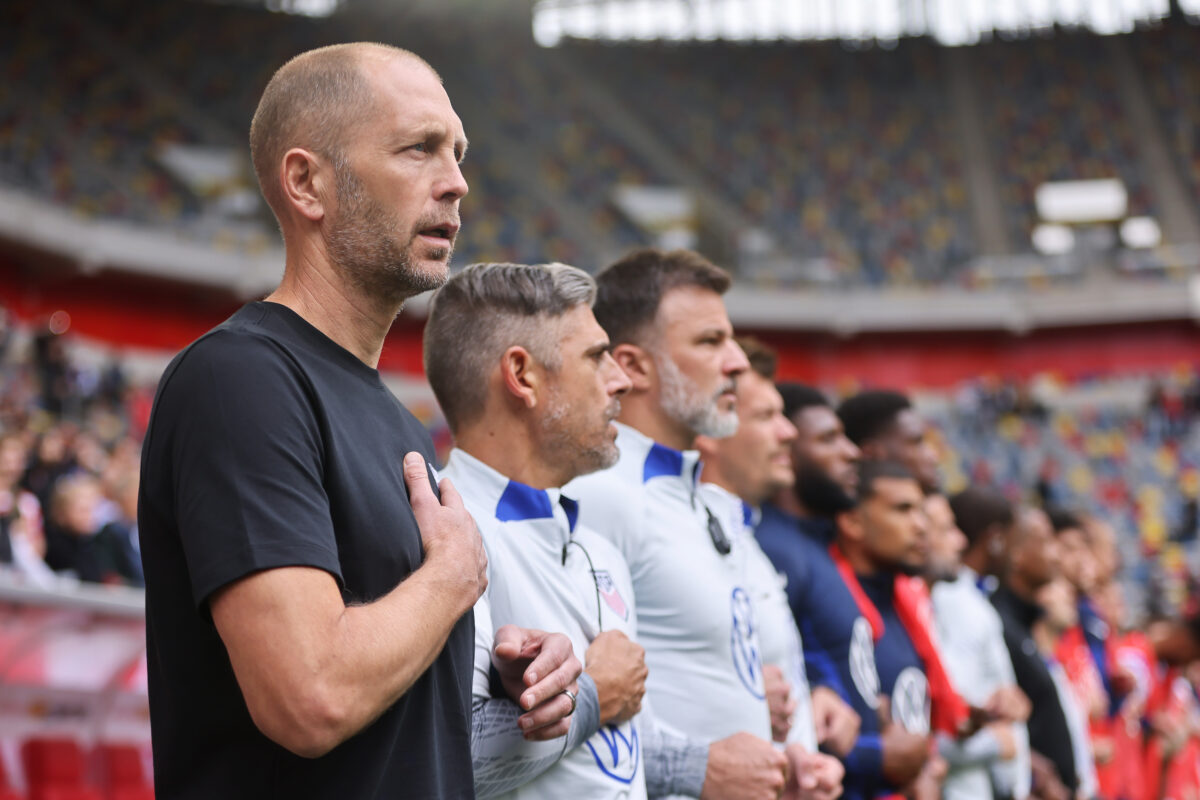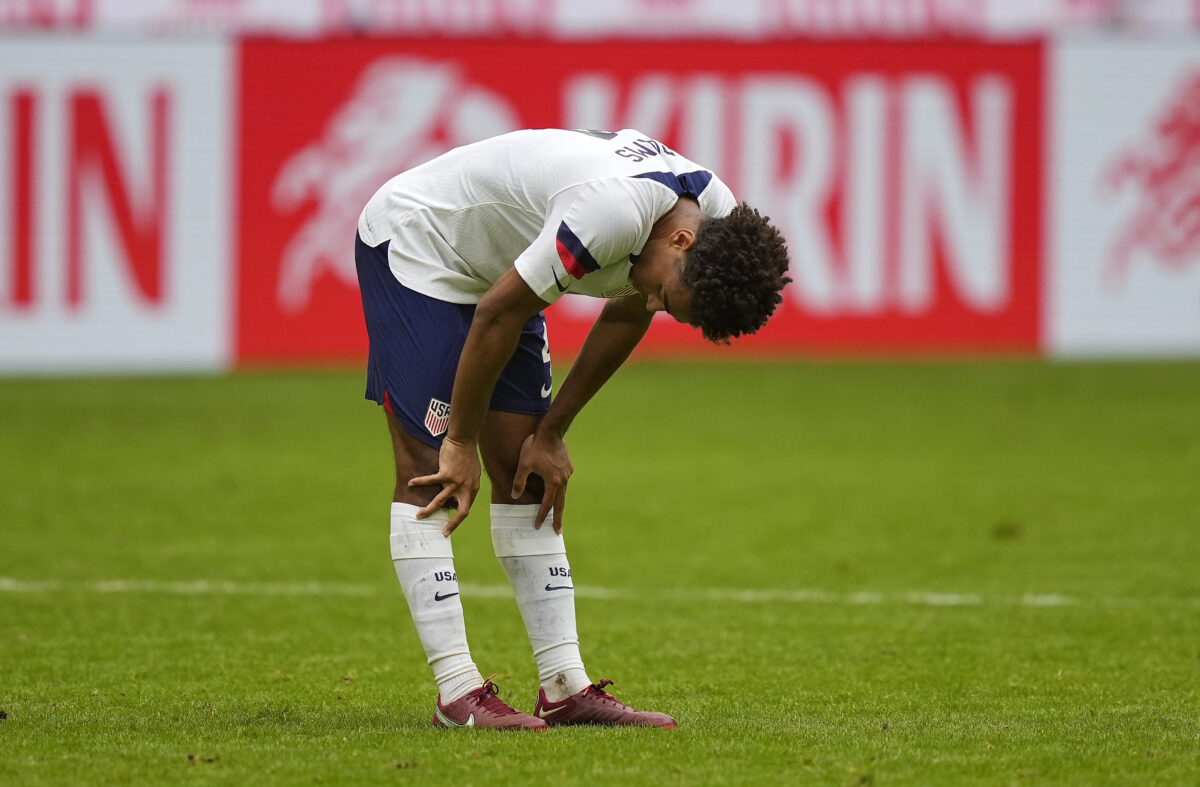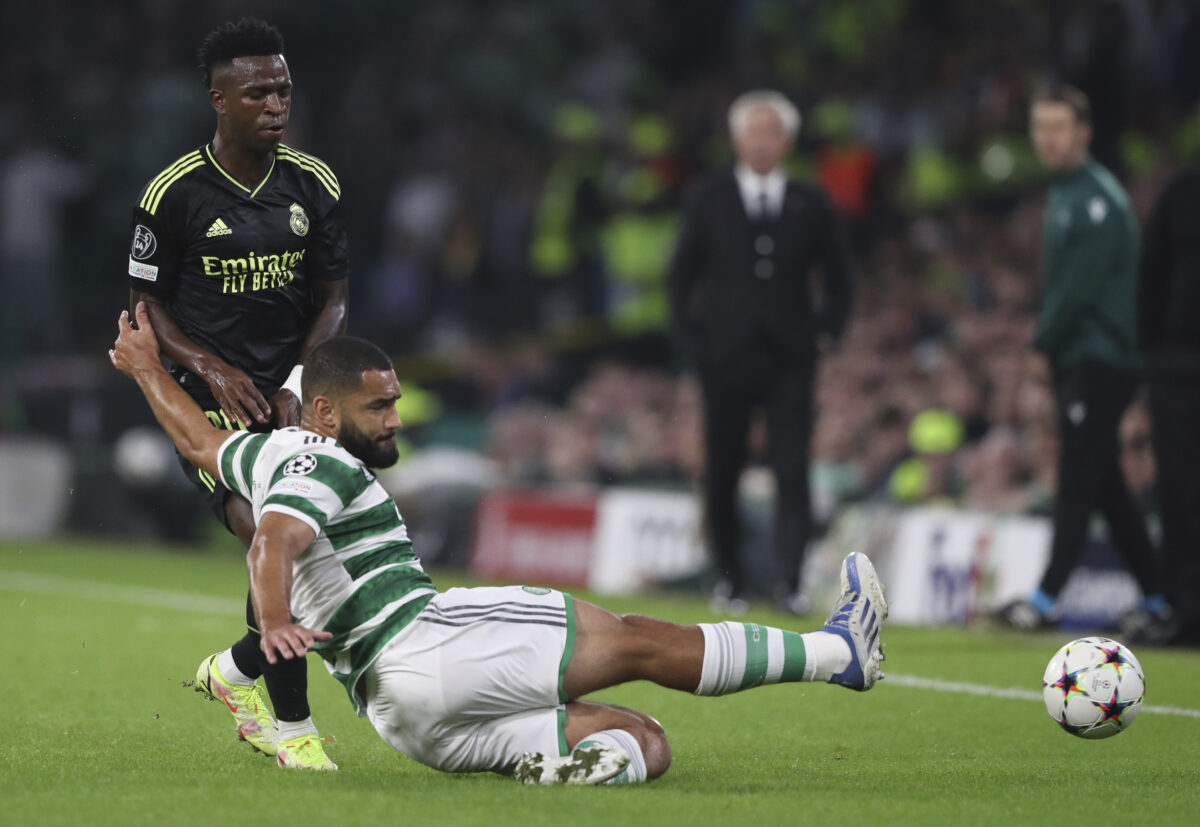The U.S. men’s national team came into September’s international window hoping to find clarity and belief, but after two dispiriting performances, they certainly didn’t get the answers they wanted.
If anything, more players saw their stock drop, and in many cases there’s no recourse beyond hoping they go back to their clubs and tear it up. Gregg Berhalter has plenty to chew on over the next several weeks, but he was probably hoping to have more “good problems” than what he’s looking at right now.
Who hurt their chances of playing a major role at the World Cup? And who seems more important today than they did a few weeks ago? Let’s check the markets and see where the individuals are trending.
Stock down: Aaron Long
We have to start with the fact that the USMNT, against two very different systems, struggled with progressing the ball from their back line into the midfield. There were multiple causes for that problem, but the one that stood out more than the rest was that the center backs were both inaccurate with their passes, and very predictable with their intentions.
Walker Zimmerman wasn’t at his best, but for Long, the possession side of things was a major source of concern. Injuries to Chris Richards and Cameron Carter-Vickers didn’t help, and Berhalter ended up subbing Long off in both games to get a look at Mark McKenzie.
The fact that Long started both games seems to indicate that Berhalter holds him in esteem, but it’s not like he lacks for competition. With Richards vying for time in the Bundesliga and all of McKenzie, Carter-Vickers, and Palmer-Brown all getting regular minutes at European clubs, Long’s form with the New York Red Bulls will need to be much sharper than what we saw in this window to ensure his place on the plane to Qatar.
Stock up: Matt Turner
There’s a lot of talk at the moment about whether Berhalter simply prefers Steffen to the extent that the starting goalkeeper job is a settled issue. That seems unlikely, but either way, Turner was the best USMNT player in this window, and there’s not much more someone can do than that.
The worry for Turner coming into this camp was that he’d played just one competitive match since moving to Arsenal this summer. Those fears of lost sharpness or confidence ended up being unfounded, as Turner was precise, fundamentally sharp, and kept Japan from walking away with a bigger margin of victory. He had less to do in the second friendly, but still responded well when called upon.
Based on recent play with the USMNT, it’s Turner that should have the edge to start against Wales on November 21. If Steffen is going to win that job, he’s going to have to impress with Middlesbrough in very short order.

Stock down: Gio Reyna
Reyna’s place in the USMNT squad isn’t in question, and when healthy, he’s obviously one of the best players in the entire pool. Berhalter is frankly lucky to have Reyna and Tim Weah possibly vying for one spot (we hear you, play-Weah-centrally advocates, but it really doesn’t seem like Berhalter is interested).
But despite some initial success with Borussia Dortmund’s cautious approach to his season, Reyna was once again having to come out of the game due to what Berhalter said post-game was some muscle tightness.
Dortmund boss Edin Terzić has since announced that Reyna’s recovery time is less than two weeks, which is the good news. The bad news is that on a team with several other key players who aren’t exactly the most durable, it’s now worth wondering whether the USMNT can lean on Reyna as a starter in a World Cup match. At the very least, they need to enter each game with a very specific plan on how they’ll adapt if he pulls up.
Stock up: Joe Scally
It’s not that Scally was a revelation against Saudi Arabia. Rather, the fact that he managed to get high and wide in the attack on a regular basis meant that he had to be accounted for, which had a positive ripple effect for the USMNT going forward.
The USMNT doesn’t function well without a fullback taking care of this task, and with Antonee Robinson missing out due to injury, no other fullback in camp was able to reliably get to the right places at the right time. Berhalter gave this responsibility to Sam Vines against Japan, and then to DeAndre Yedlin on the other side against Saudi Arabia, before Scally’s movement allowed for some more familiar patterns of play to take hold.
It wasn’t a good camp for the USMNT fullback pool in general, so Scally — who has had something of a difficult time getting call-ups, despite being a reliable starter at Borussia Mönchengladbach — is benefitting from simply not doing too badly while others disappointed. But then, that’s kind of the story of this entire international window, and being a player who didn’t run into some kind of problem means Scally’s odds of being on the final 26-man roster should be better today than they were two weeks ago.
Stock down: Ricardo Pepi
Progress isn’t linear, and anyone hoping that Pepi finally breaking his long goal drought meant that he’d come roaring into this USMNT camp was disappointed by how he struggled to really get enough touches to be a factor against Saudi Arabia.

Some of that was simply the entire team struggling to break into the attacking third with consistency, and there’s only so much Pepi can do to fix that. He’s not a channel-running No. 9, and he’s not going to drop off the front line as a false nine either. If the team can’t get out of their own end, he’s not going to be involved.
But the real reason Pepi’s stock fell a bit is that Jesús Ferreira came in, and the USMNT attack instantly started finding angles it hadn’t been seeing earlier. Ferreira has taken some flack for jumping too early for a header against Japan, and he didn’t bury any looks against Saudi Arabia, but the entire attack was more lively once he came on. Not to get too into the weeds on modern soccer thinking, but an attack that is creating chances is believed to be better for winning games than a team that can’t get out of second gear going forward.
With Ferreira seeming to be the best fit for the players around him, Jordan Pefok being the hot hand as a finisher, and both Pepi and Josh Sargent skewing towards being best as pressing forwards, it feels like Berhalter has to sort through some tough questions. There’s a really good case to be made for there only being one spot for Pepi and Sargent, given that they’re the two most similar players in this group.
For Pepi, the best cure would be to light it up over the next few weeks at Groningen. If his profile becomes pressing/target man who is also scoring regularly, the questions here are not nearly as pointed. It’s just that, like we said, progress isn’t linear, and one goal in nearly a year could be a blip rather than the start of things to come.
[lawrence-related id=7814,7715,7738]


